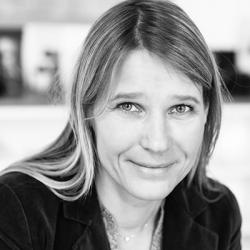Surrealism in North Africa and Western Asia
Surrealism in North Africa and Western Asia
“Limites non-frontières du surréalisme […] le surréalisme tend à unifier aujourd’hui sur son nom les aspirations des écrivains et des artistes novateurs de tous les pays.“
(André Breton, 1937)
When, where and what was surrealism? These questions appear obsolete when looking at Paris, London or New York, for example, where research into surrealism has been abundant and well documented. When turning our gaze to other regions, especially outside the Western realm, things seem to be much less obvious and barely studied. The exhibition Art et liberté : rupture, guerre et surréalisme en Égypte (1938-1948), devoted to the group known as Art et liberté (jama´at al-fann wa al-hurriyyah), at the Musée national d’art moderne in 2016/17, can be considered as a turning point in the exploration of surrealism in the Arab region. For the first time, the group was exhibited in its historical context and at the former centre of surrealism itself, namely in Paris. The shift of centre and periphery implied here is the prelude to a paradigmatic global turn, which considers surrealism outside Paris not as peripheral phenomena but as equal avant-gardes. Surrealism’s distinct moral dimension and its political and aesthetic radicalism were fundamental for its international appeal. Its ability to adapt, engage and merge with local conditions makes it a challenging phenomenon to study, especially in the light of today’s modernism approaches in regions outside Europe and North America.
In 2016, the first joint research project of the Orient-Institut Beirut (OIB) and the Deutsches Forum für Kunstgeschichte (DFK Paris) set out to investigate surrealism since the 1930s in West Asia and North Africa, focusing on the international networks between Paris, Beirut, Cairo, Istanbul and other metropoles in the region. This geographic area has largely been neglected in terms of modern art historical studies, but has fortunately gained rising scholarly attention during the past two decades. The joint workshop The Avant-Garde and its Networks: Surrealism in Paris, North Africa and the Middle East since the 1930s, held from 14–15 November 2016 in Beirut, brought together international scholars from different disciplinary backgrounds to debate about this topic. This collaboration has resulted in the newly released joint publication Surrealism in North Africa and Western Asia. Crossings and Encounters, published by Ergon Verlag in Würzburg.
The edited volume brings to light untold stories of encounters and contacts that form the building blocks of a history of “transmodernity”. By presenting and analyzing new sources, they open up new historical, cultural, and artistic contexts and add to our knowledge of surrealism both as a global and local phenomenon.
Project leaders:
- Monique Bellan, Postdoc Researcher in the LAWHA Team, Berlin
- Julia Drost, Research Director at the DFK
Leadership





